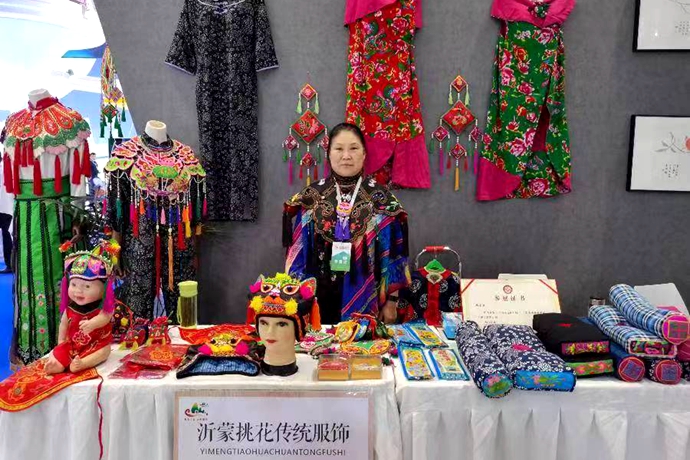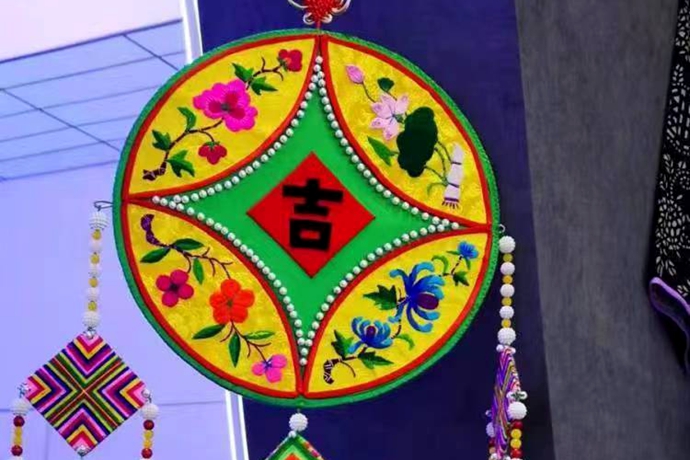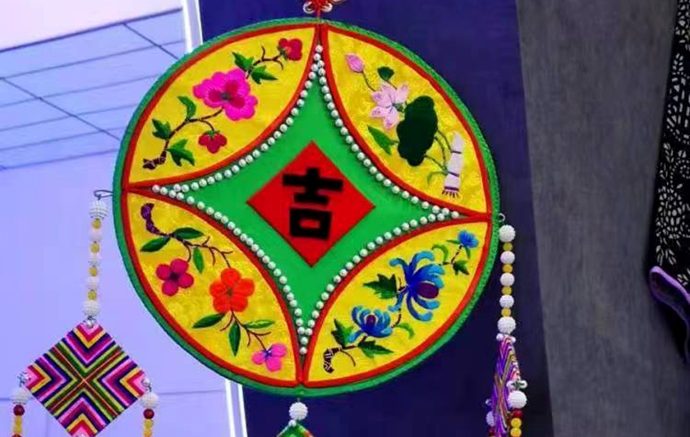
Linyi City is located at the southeast of Shandong Province. It is the most populous city in Shandong Province, well-known home and abroad for being a city of global water-skiing sport, the logistics capital in China as well as the eco-tourism resort. Traditional handicrafts are also very famous there. Yimeng Embroidering Art, for example, is an intangible cultural heritage of Shandong Province. Ms. XING Aizhi is a known figure as the inheritor of this art.
“This skill was inherited from my mother,” she said. The cross-stitch pattern integrates painting, pruning, embroidery, and brocade. The simple and dignified art form has a solid texture, damage-resistant and attains profound meanings. With its great artistic and aesthetic value, the art has been an important ornament for weddings, for vocation gifts and for antique homestyle decorations.
“Yimeng Picking-Embroidery” is the main representative of Shandong cross-stitch embroidery, featuring a stitch method known as ” pick-weaving”. It is a folk art that integrates life and art, popularly distributed around Mengshan Mountain in the south of Pingyi County, Linyi City.

The flower-stitching in Pingyi County has a long history. It originated in the Sui and Tang Dynasties, experienced the maturity period in the Song, Yuan, Ming and Qing Dynasties, and reached its peak stage in the late Qing Dynasty and the early Republic of China. According to the historical records, the initial products of stitching were headscarves, hems, door curtains, tent edges, bedsides, etc. They were used by farmer ladies to dress up or to decorate their homes. Gradually, the art began to be applied to clothes and other products.
Ms. XING Aizhi founded a “flower-stitching” class in her village to study and pass down the tradition. Meanwhile, the number of students increased from five or six to more than thrity. They hold exhibitions, do online sales and more, with which to further promote the art home and abroad.


Be the first to comment on "Yimeng Embroidering Art, A Beauty from Shandong "